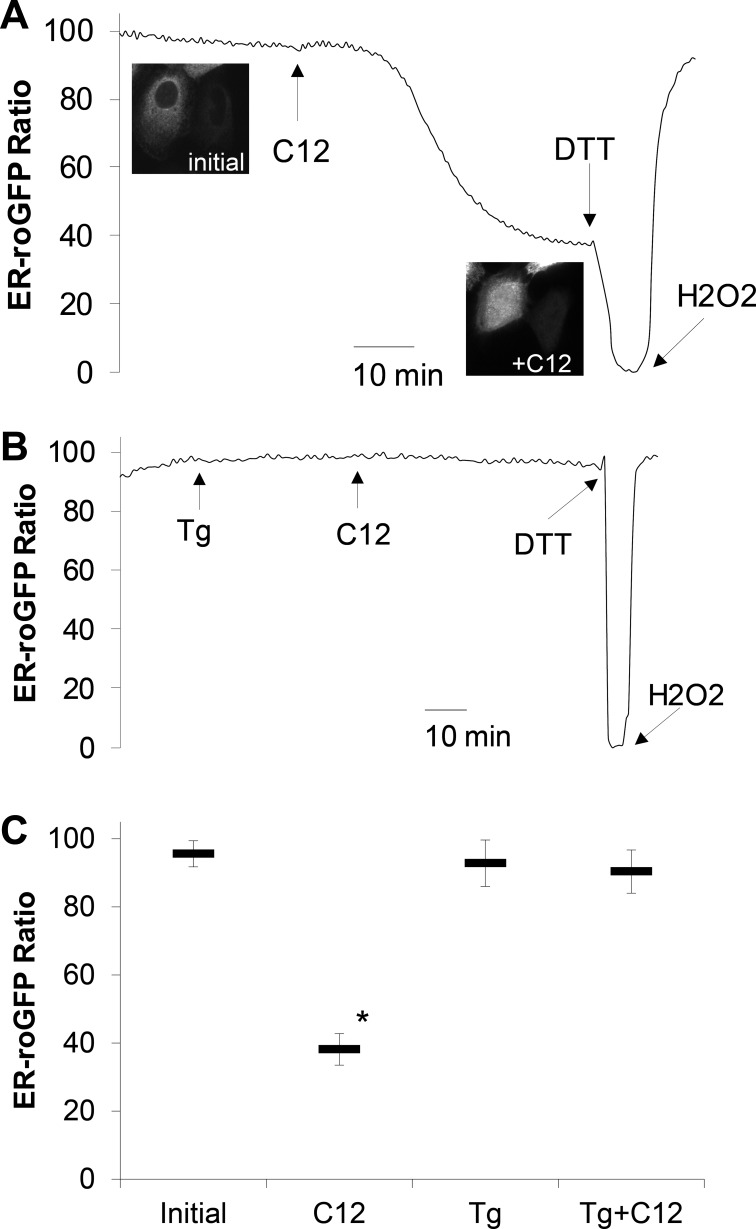Fig. 6.
C12 causes release of endoplasmic reticulum (ER)-targeted redox-sensitive green fluorescent protein (roGFP) into the cytosol, and Tg prevents this response. JME cells grown on cover glasses were transfected with ER-targeted roGFP (ER-roGFP) and then mounted in the imaging microscope. Relative redox potential in the ER (redoxer), along with morphology of ER-roGFP, was recorded in response to C12 (50 μM), Tg (1 μM), and Tg + C12. A: C12 caused, after a delay, redox potential of C12 to decrease (become more reduced) over 40 min. Insets: under control conditions, roGFP was localized exclusively to the ER lumen and absent in the cytosol and nuclear lumen (Initial); after 45 min of C12 treatment, ER-roGFP was distributed smoothly throughout the ER and the cytosol and in the nucleus, likely resulting from leakage of ER-roGFP from the oxidized ER lumen into the reduced cytosol and nucleus (+C12). B: Tg had no effect on redox potential, which remained oxidized, and subsequent addition of C12 also had no effect. Probe was still responsive to changes in redoxer, as shown by DTT-induced reduction and H2O2-induced oxidation of ER-roGFP at the end of the experiment. In cells treated with Tg or Tg + C12, roGFP was localized in a reticular pattern specific for the ER but was excluded from the nucleus, similar to distribution in control cells. C: summary of relative redox potential in the ER (redoxer) in control (Initial), C12, Tg, and Tg + C12. Values are means ± SD (n = 3 experiments). *P < 0.05 vs. Initial.

